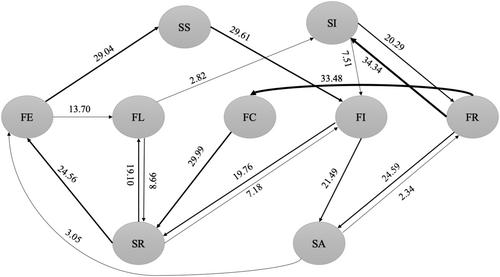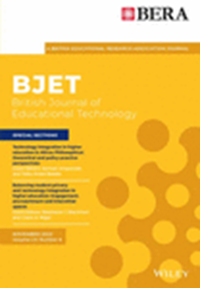Collaborative dialogue patterns of pair programming and their impact on programming self-efficacy and coding performance
Abstract
The purpose of this study was to investigate the collaborative dialogue patterns of pair programming and their impact on programming self-efficacy and coding performance for both slow- and fast-paced students. Forty-six postgraduate students participated in the study. The students were asked to solve programming problems in pairs; those pairs' conversations were recorded when they worked on their tasks. Data analysis methods, including lag sequential analysis, cluster analysis and paired t-test, were employed, and the results showed that (1) four collaborative dialogue patterns emerged: Lecture, Guide, Question and Answer (Q&A), and Inquiry patterns; (2) Guide and Inquiry patterns significantly increased programming self-efficacy for both fast- and slow-paced students while Lecture and Q&A patterns significantly increased programming self-efficacy for slow-paced students but not for fast-paced students; (3) Guide and Inquiry patterns played a significant role in improving coding performance for slow-paced students. The study reveals a complex relationship between collaborative dialogue patterns with programming self-efficacy and coding performance, critically affecting students' pair programming quality. Further details of the findings are also discussed.
Practitioner notes
What is already known about this topic
- Pair programming is promising in promoting problem solving and knowledge transfer and is widely used in programming education.
- There are different patterns observed in the pair programming process.
- Collaborative dialogue patterns found in “expert-novice” pair programming were derived from a single programming task.
What this paper adds
- Four collaborative dialogue patterns of pair programming emerged by increasing the different tasks and experiment duration and expanding the sample size, which further verified the stability of the similar patterns in previous studies.
- Four collaborative dialogue patterns showed different significant impacts on different students' programming self-efficacy and coding performance.
- This study presents the finer-grained characteristics of collaborative interaction in programmer pairs and contributes to the explanation regarding the different effects of pair programming reported in previous studies.
Implications for practice and/or policy
- Four collaborative dialogue patterns can help the teachers understand the collaborative process of pair programming between fast- and slow-paced students.
- The collaborative dialogue patterns can be used to formulate effective intervention strategies to stimulate the process of collaboration in pairs and applied in future programming education to provide a new path for cultivating and promoting students' programming abilities.
- It is worth further investigating the impact of collaborative dialogue patterns on students' computational thinking.


 求助内容:
求助内容: 应助结果提醒方式:
应助结果提醒方式:


